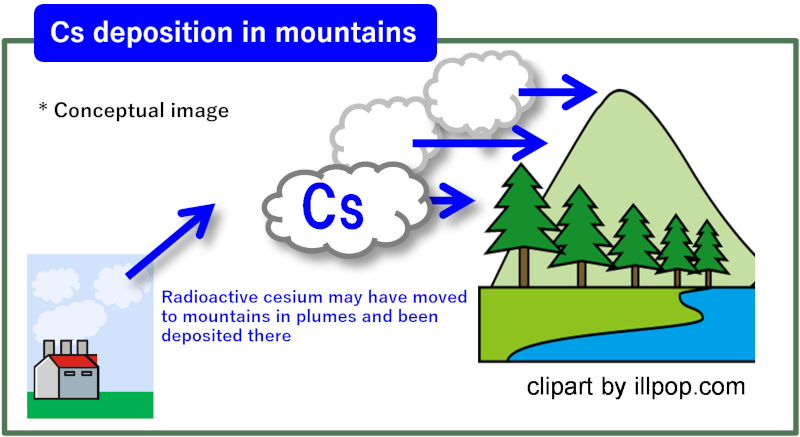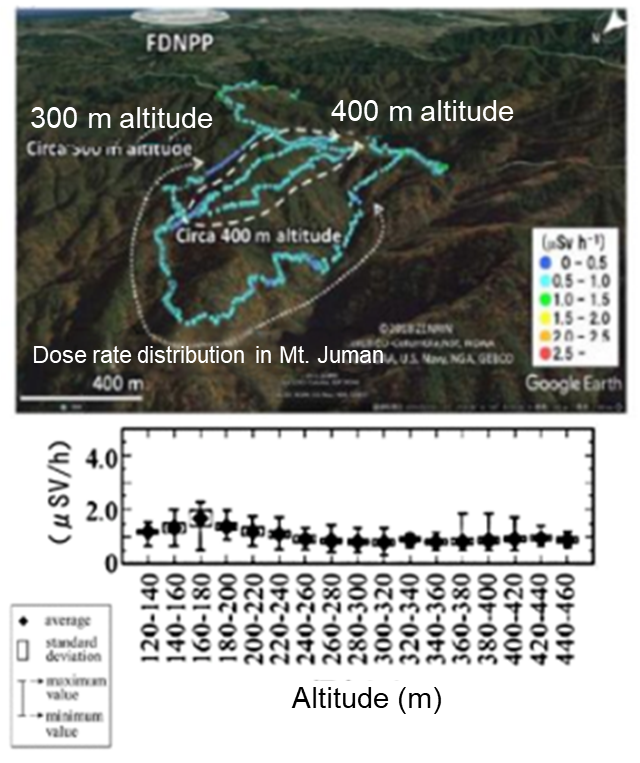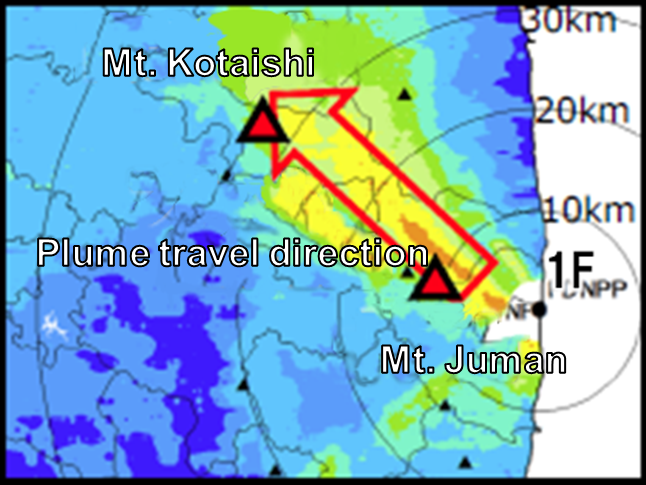Radioactivity Dynamics in forests
(2019)
QDoes the concentration of radioactive cesium deposited in mountain forests vary by altitude and location?
AThe initial deposition of radioactive cesium in mountains and its migration behavior are being investigated using lichen (a kind of fungi).
A survey in Fukushima Prefecture revealed that measured concentrations of radioactive cesium (137Cs) in lichen (February 2013) had a significant positive correlation with the calculated amounts of 137Cs deposition on the soil taken shortly after the accident (June 2011). The results suggest the possibility that lichen preserves the cesium deposition status in an early stage after the accident.

Fig.1 Cs deposition in mountains (* conceptual image)

Fig.2 Lichen grown on a tree trunk(Parmelioid lichens)
JAEA is investigating the situation of radioactive cesium deposition in an early stage after the accident by measuring radioactive cesium concentrations in lichen in maintains and chemical states of cesium in lichen. JAEA also proceeds to understand and predict the behavior of radioactive cesium in mountains by investigating the detailed distribution of deposited cesium in mountains in relation to factors such as altitude and direction.

Fig.3 Relationship between the radioactive cesium concentration in lichen collected in Fukushima Prefecture and the deposition amount in soil
Source (graph): : Dohi, T. et al., Radiocaesium Activity Concentrations in Parmelioid Lichens within a 60 km Radius of the Fukushima Dai-ichi Nuclear Power Plant, Journal of Environmental Radioactivity, vol. 146, 2015, p.125-133.
The dose rate distribution and altitude characteristics vary across mountain areas around the Fukushima Daiichi NPS even along the same plume trajectory. Therefore, the deposition mechanism may vary between areas.
-

Fig.4 Dose rate distribution in Mt. Kotaishi
-

Fig.5 Dose rate distribution in Mt. Juman

Fig.6 Surveyed mountain areas
- It is estimated that dry deposition is dependent on direction, while wet deposition exhibits uniform distribution.
- The deposition pattern may vary even between areas along the same plume trajectory.
→ Variation in the initial deposition pattern may result in differences in subsequent Cs migration behavior in mountain forests. Findings from these surveys are expected to contribute to the prediction of Cs concentrations in different parts of forests.
Related articles
- How do air dose rates in forests change with time?
- Do sediment with high radioactive cesium concentration continue to be deposited on river bottoms?
- Is there a continuous input of cesium contamination to rivers from forests?
- How much did the amount or the concentration of Cs released to river water by forest fire? How did them change by time?
